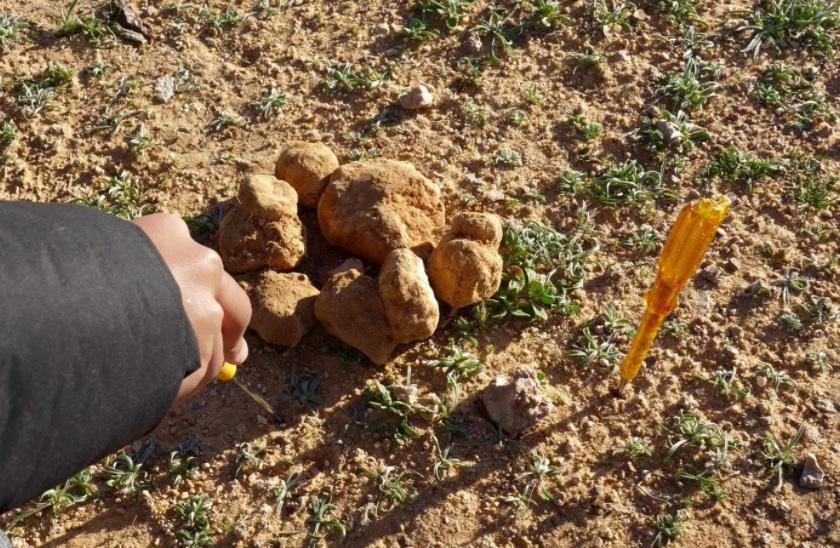Every year, as the rains grace the Northern Borders region of Saudi Arabia, a unique and vibrant tradition comes to life: truffle hunting. This annual activity, blending the thrill of discovery with the richness of heritage, draws nature lovers and cultural enthusiasts alike. Armed with traditional knowledge and a deep connection to the land, they set out at sunrise on exhilarating journeys in search of the elusive desert truffles, a prized delicacy that has captivated generations.
Recently, the Saudi Press Agency joined a group of truffle hunters in the serene Al-Sahin area, where the desert’s tranquility and the earthy scent of rain-kissed flora set the stage for an unforgettable adventure. This experience is more than just a hunt—it’s a celebration of the profound bond between the region’s natural heritage and its cultural identity.
The Art of Truffle Hunting
Truffle hunting is a skill passed down through generations, rooted in traditional knowledge and a keen understanding of the land. Hunters interpret subtle soil and plant indicators to locate potential truffle sites. Equipped with simple tools that reflect humanity’s harmonious relationship with nature, they use long sticks to gently shift the soil, revealing the hidden treasures beneath. Others rely on their hands, carefully removing the surface layer to avoid damaging the delicate truffles. Baskets and bags are always at the ready to collect the bounty.
The truffle season, which runs from late winter to early spring, aligns with the rainy period known as Wasm. Beginning in January and lasting until March, the rains enrich the soil and activate truffle seeds. Growth rates vary—some truffles require 50 to 70 days of rain, while others mature more quickly.
The Science and Splendor of Truffles
Truffles are wild fungi that grow beneath the surface, their development influenced by a delicate interplay of soil, moisture, and surrounding vegetation. They thrive in well-ventilated sandy or clay soils, often revealing their presence through subtle signs like slight cracks or small lumps on the surface.
Among the varieties found in the region, the Zubaidi truffle stands out for its round shape and premium quality. The Khalasi, smaller and irregularly shaped, is equally prized. The Jabbi, small and round, and the Hooper, the tiniest and most irregular of all, add to the diversity of this desert treasure.
A Celebration of Flavor and Tradition
Truffles are more than just a culinary delight—they are a symbol of the region’s cultural heritage. Their unique flavor enhances traditional dishes, making them a sought-after ingredient in local cuisine. But truffle hunting is not merely about food; it’s a celebration of nature, community, and tradition.
The season brings people together, fostering social bonds and reviving an age-old practice that has been cherished for centuries. As hunters gather in the desert, they share stories, laughter, and the joy of discovery, creating memories that transcend generations.
Preserving a Legacy
As interest in truffle hunting grows, so does the recognition of the need to protect the environment and desert landscapes that make this tradition possible. Educating future generations about sustainable practices and the importance of preserving this cultural heritage is becoming a priority.
The truffle season is a testament to the splendor of nature and the enduring value of heritage. It reminds us of the beauty that lies beneath the surface, waiting to be discovered, and the timeless traditions that connect us to the land and to each other.
In the Northern Borders region, truffle hunting is more than an activity—it’s a journey into the heart of nature, culture, and community. It’s a story of resilience, connection, and the enduring magic of the desert.


